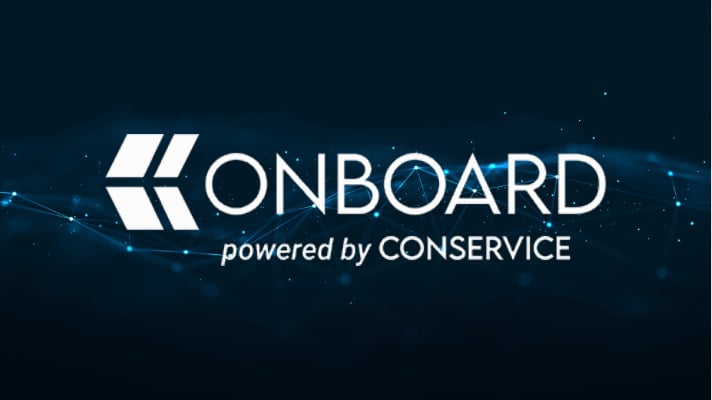Discovering True North for Territory Excellence
Overview
- Why shouldn’t we just ignore a territory plan throughout the year? [1:33]
- How often should you monitor your plan? [3:41]
- What are some things to look at in your plan? [4:39]
- Is there somewhere that everyone should start to look at? [6:24]
- The Book of Business [7:49]
- What are the questions we should be asking to uncover what metrics we’re looking for? [10:10]
- Walking through a scenario [13:16]
- Are we putting reps in the right places? [19:37]
- What does “Listening to the Business” mean? [22:05]
- Do you have any tips to foster that culture of sharing and listening? [25:31]
- How do we take action? [26:59]
- Final Thoughts [29:33]
Introductions
Tyler
All right. Hello, everybody. Welcome to another fun little Fireside Chat. I’m your host, Tyler Simons, Head of Customer Success at Fullcast, and we are a go-to-market planning and execution platform. Today’s topic, we’re going to be talking about “Discovering True North for Territory Excellence.” What does that mean? I don’t know. So that’s why we have Kenny here. So, Kenny Hsu, why don’t you go ahead and introduce yourself, and then we’ll dive into some questions.
Kenny
Tyler, thanks for having me. I guess we’ll see if we can find that True North together in the next thirty minutes. Hello, everybody. Thanks for joining and listening. My name is Kenny Hsu, and I am currently the VP of Revenue Operations at AuditBoard.
Why shouldn’t we just ignore a territory plan throughout the year? [1:33]
Tyler
Wonderful. So before we really get into this discovering the True North piece, I want to set our stage here. The main thing I really want us to understand is why we can’t just ignore a territory plan throughout the year. We do all this planning, and I talk about this a lot on our side, too. But you spend so much time in spreadsheets or in Fullcast or wherever you’re going to do your planning. If you just kind of throw it in and ignore it, that’s a lot of time you spent in it. So maybe you can help us understand why we shouldn’t just ignore it after Q One when we cut over.
Kenny
Well, we’re recording this in the middle of May, right? I don’t know what everybody’s LinkedIn state is like these days, but I noticed in the last month or so, everything went from, “Oh, my God, I raised a lot of money. Oh, my God, we raised so much money. Oh, I did this and everything was positive, celebratory we’re growing, growing, growing.” To all of a sudden it’s a little bit neutral and a little bit negative. And that is all to say, things change on a dime very quickly.
Kenny
So if you have a mentality around your territories of set it and forget it. I think if you’re in a very stable, slow growth company or stable, slow growth market where nothing else is really going on, maybe you can get away with it. But for many of us, where the market conditions are dynamic, our companies are hyper growing, a year is way too long to wait. Six months is also way too long to wait, but the amount of things that we’ve learned about our territories, our business, our markets over the last six months are amazing. Literally, I just got off the phone and said to one of our sales leaders, yeah, we set something up.
We made a comment about allocation of resources in one of our businesses in September. Boy, were we wrong. Luckily, it was wrong through the positive and actually, the business is a lot stronger than we thought and we’re going to go invest more into it. But, yeah, you need to make sure you have a nimble thing and not something that’s set in stone where you don’t revisit every once in a while.
How often should you monitor your plan? [3:41]
Tyler
Like, let’s say the market is static. It’s growing, it’s fine, there’s nothing crazy going on. We’re not starting to think about things negatively to your point. Is there like a regular cadence for monitoring your plan, like dealing with some of these changes. Do I need to be doing this every day?
Kenny
I think every day is probably a little much. It really depends on what you’re doing. But I’d say if you’re not looking at your territories once a quarter, that’s probably too long, because even if you’re in a stable environment, stable growth, you still have people coming in and out and things are still happening to your business.
I know a lot of people like to say we should be continuously planning. That would be great if you’re there, but I would say pragmatically once a quarter, at least look at what’s going on across your territories, if there’s anything that’s surprising you, or is everything just working out the way you thought it would, in which case, great, you can keep going.
What are some things to look at in your plan? [4:39]
Tyler
So once a quarter at least, whatever you decide. But what are some of the things that we should be looking at?
Kenny
So this is one that’s super interesting. I think I’ve had the privilege of working at four different tech companies over the last number of years. What I’ve learned is actually every company is different. Depending on what the business is, depending on where you are and your cycle of development, your “True North,” to go back to our title could be very different. So the types of metrics that I’m looking at today here at AuditBoard are very different than the ones I looked at at the previous companies that I was at.
And I think one of the things that we need to do as folks in operations or folks in sales leadership, is understand if we’re going to look at our territories every six months, what are we actually looking at right? The most common one is just number of accounts. Perhaps for your business, that may be right, but I would argue for most of our businesses, that alone probably isn’t enough.
Is there somewhere that everyone should start to look at? [6:24]
Tyler
You do the number of accounts thing, but maybe you were the person that was starting off at the number of accounts. This is what you’ve been doing, or you’ve come into an organization and what they’ve been thinking about is like, “Let’s just put 300 accounts into each rep’s name. Let’s not go into any details,” but you want to take that first step into maybe being a little bit more diligent into looking into your territories. Is there somewhere that you think everyone should start to look at?
Kenny
I do. I think you need to look at three things at a minimum, and then you can get really fancy and add a couple more. Or you can take those three and go a little bit deeper. But I think at a baseline, you should look at the number of accounts per territory. You should look at the book of business that you have existing in that territory. Then I think you need to look at whether it’s pipeline or bookings, but something to tell you how hot or cold those territories are.
I would always start with those three basics. Just line up all of your territories or some summation of those territories and just see what’s going on across the three. And then you should come up with five to eight questions of like, “Oh, this looks good. That looks interesting,” and start to really dig in.
As an example, on the number of accounts you may go “Actually, it’s not really the number of accounts per se. It’s really the number of ultimate parents.” Global HQ that you need to know because maybe your company only sells. Maybe has a solution that is only purchased by headquarters and not the subsidiaries. Start with those three and then start to refine from there.
The Book of Business [7:49]
Tyler
This is a dumb question because I’m going to go back to book of business. But just so I’m not assuming this, I’m assuming book of businesses is like ARR, what existing business that exists. So we’re looking at number of accounts and you might end up tuning that. Your existing business within each of the territories and then essentially like potential business that you see.
Kenny
Yes, that’s exactly right.
Tyler
And I’ve actually seen customers take a look at things like number of early stage opportunities. It’s kind of an indication of almost MQLs. I mean, you could go further back to MQLs and stuff and put those, but usually pipeline creation or created opportunities is something that I see customers do because it’s an earlier indicator of territory potential.
Kenny
It’s funny you said that because, and again, this is where you really need to know your business, because I get told the opposite. I get told, “Yeah, if you don’t look at the early stages much, look at how much real pipeline we have.” Whatever your stages are, like look at stage two and beyond. That’s how we know that’s real pipeline and not just interesting conversations we’re having.
So again, it could go a million different ways. And I think this is why we came up with the title of this webinar. There is a little bit of work there to discover what your “True North” is because maybe for your business, you’re expanding to lots of very new territories where you don’t have a lot of mature pipeline to look at and MQLs and maybe even campaign members that are responding and interacting with you are all you got and you just got to go and figure out and make your best judgment from there.
Tyler
So we got these standard metrics, if we want to call it that. We’ve kind of covered that piece. But now we’re getting into this, let’s take a level deeper and really figure out what is the “True North” for us. What are the things, the metrics that we should be looking at?
Of course, like you said earlier, it’s different for everybody. Even on our side with our customers, we build these metrics for everybody, and the only one I’ve ever seen, actually repeated with the same formula is number of accounts. That’s it. That’s the only one I can calculate without anything.
What are the questions we should be asking to uncover what metrics we’re looking for? [10:10]
Tyler
But what are the questions we should be asking to start to uncover what those metrics are? Because that’s going to be that first step. I struggle with this sometimes. I see the first three, but then, what are the things I need to be thinking about or questions I should be asking about the data to uncover those insights, to dig into those metrics?
Kenny
I wish I had a silver bullet, but there’s going to be an error here of kind of playing detective and discovering. That’s just been my experience. One question that has served me well is “See if you can explain or identify what’s in the way of your growth.”
So, for instance, with us, especially early on at my tenure at AuditBoard, I noticed something very interesting, which is all of our reps seem to be blessed with a lot of pipeline, which is an amazing thing to have for us. And actually looking at it, thinking through everything. Are standard metrics really the thing that’s explaining what’s a rich territory or not rich territory. Or is there actually something else that’s getting in the way of growth?
For us, for a little while, actually, our demand was great and we needed to get more feet on the street to make sure that we were talking to and satisfying all the customers that were interested in AuditBoard. Again, first class problem for us to go have. So in addition to those three standard metrics, we also started looking at each reps load.
We started saying if there’s a rep that’s got quote unquote too many opportunities, and that’s always a subjective thing, but if you see somebody way far ahead in terms of number of opportunities, however you want to measure it, you’re like “Hm maybe your territory can take a few more.”
So at least for us at our current stage, and it’s a weird metric I’ve never actually measured before. And I’ve checked with other people that I’ve worked with before. Have you ever worked this? But one of the things I do look at and this one I look at weekly is across an entire roster of AEs. Like, how many opportunities is each person working, how many things are coming in, how many things are going out?
So it’s almost literally how well load balanced we are across our territories. We’re using it to inform which territory, which region, which industry is really taking in our messaging and really engaging with us and wants to know more about AuditBoard. And that’s where we’re leaning in.
Walking through a scenario [13:16]
Tyler
Yeah, that makes sense. Let’s go into another scenario. I clued in on the scenario that you had brought up earlier, which is the net new type of Greenfield space. So there’s not a lot of pipeline. Maybe there’s some pipeline, but probably unreliable at this point. You know, you want to break into it. Maybe we could walk through that same scenario like what you just did. You kind of walked us through the thought process there. I don’t know, maybe we could walk through something like that and determine what are the things that we should be looking at and how should we approach going about that.
Kenny
I’ll dig into the first standard metric. Many of us have some kind of account score or account scoring done on our accounts. Even if we don’t then maybe it’s like the AE tagging, what’s ABCDE.
Yeah. I think there is one good metric, especially when you’re going into a green field. I know the old adage that you should never send somebody into a completely cold territory, and I’m wholly supportive of that. But, there are going to be times when you’re trying to break into a new region or a new industry or a new country where you just don’t have anything.
I think that’s where being smart about, “Hey, where have you been very good at? Whether it’s industry size of companies, types of companies, etc. And really getting to know the different aspects that would go into an account score. Then going into your new territory to say “How many similar things can I find?” Could be really helpful.
Let’s say you’re very successful at selling to pre IPO companies that have raised a decent amount of money and the country you’re trying to break into has none of those. So that’s where you can tweak what you’re looking at to match to give you a bit of a sense for, “Okay, nothing’s ever certain. We’re clearly making a bet here. Do we see enough evidence for the right bet?”
If you weren’t going out to the field, just quote unquote in the back office looking at the data, that’s what you would do. But I still wouldn’t just rely on it. Hopefully, if you’re going in, it’s because you have seen from inbound data that even if you don’t have any presence, you haven’t aggressively marketed in that market and people are still reaching out to you. Hopefully there is some early indication that the market is pulling you in versus you saying, well, we must go there.
Hopefully there is something and it’s not completely cold. But if there is and before you make that call, I would still like find some way, maybe have your demand team run the test campaign to targets in that area, maybe finding a local partner who can help you host an event and fly in a couple of people and just to see if anybody even shows up to your event. So I would still use the same framework. Clearly, you’re not going to have a book of business, but can you at least estimate and see is there really traction there?
I was trying to find the right place in the event to make this point, and I’ll make it now. I think territory planning is the most overlooked, but at the same time, most strategic decision, an ops team or a sales leadership team can make. Every time I’ve seen or heard people do really well, it’s because they put people in the right places.
And every time when I’ve heard people say things like growth is slowing down and we dig into the details. Yes, they have the 20% of the people delivering 80% of the number. But even below that, they have a lot of people in places where there’s not a lot of business going on. Or they put too many people into a place that’s not ready for that many people.
So it’s my belief that this is a discipline that we all as a profession need to get a lot better at and do it a lot more frequently. Not just say, “Oh yeah, we should be in this country. Let’s just throw a couple of people in there and see what happens.”
Again, with some of the sentiments that I’ve been seeing out there, I think the market, whether it’s investors, private or public, are going to demand that we take that more data driven and more cautious approach before we go into opening up new markets.
Yeah that makes sense. I think there’s been an article shared around internally here, and I don’t know who wrote it. I can’t remember much. So you can’t quote me on this, but the basis of it tying back to the importance of territory planning and things like that is the main thing that I took from it was that if you do territory planning right, you can essentially squeeze an additional 5% to 7% revenue out of each of your territories. So you think about that and you blow that up so that your number is $50 million, we’re talking about an extra two and a half million in ARR.
Sounds like the author did some good amount of research and good data to come up with that. I want to make the same point, but maybe from a slightly different point of view. In my role, I get to meet lots of reps. Lots of people that have come in and joined our team and are very excited and ready to get going.
Are we putting reps in the right places? [19:37]
Kenny
I guess where I hold myself accountable is I want to be able to look at them in the eyes and say, yes, we’ve taken the care and taken the time to work with your manager to make sure where we’re sending you, we’re confident that it’s going to go well. To me, it’s like there’s like an amount of human decency. Like for any other role, you would never say, “Come join us. I don’t know if you’re going to hit your number. I don’t know.”
Tyler
“Hey, we’ll give you 1000 accounts. We just don’t know what they are.”
Kenny
Again, from a quantitative standpoint, I don’t doubt this author’s research and analysis. Frankly, I think the delta is probably even bigger from my experience, especially if you’re in hyper growth. But to me, all of us in sales and ops always talk about sales culture, sales culture. To me, this is actually a big part of it. Are we sending people into places where we have a high degree of certainty that they’re going to succeed? And if we don’t, then what are we really doing? And do we need to slow down a little bit and think through it first?
Tyler
I think that’s a really good perspective because that’s the one thing you always hear. The number one complaint is “my territory is awful” from a sales rep perspective.
Kenny
I have no idea what you’re talking about. I never hear that.
Tyler
Well, you’re probably fine.
Kenny
Oh, I’m kidding.
Tyler
I have a buddy, that’s an account executive, and he’s always complaining to me about his territory stuff. I’m like, “Dude, you need to go somewhere else.” Anyway, the one thing that came to mind when we were talking about this other scenario and then we’ll move on to something else. But I just had this thought pop into my head called “Lookalike Territories.”
Tyler
You’re building this new Greenfield space and you almost are trying to build lookalike territories based on successful territories that already exist. So maybe the pipeline is not there, but then you’re kind of looking at the underlying maybe firmographic or technographic things that are happening on that account that you can try and replicate for the new area.
What does “Listening to the Business” mean? [22:05]
Tyler
So anyway, that was my two cents. I have this note. You and I chatted a while ago, and I got this note that says, “Listen to the business”. I was wondering if you could refresh my memory on this. What did you mean by listening to the business? And I think this ties into our territory excellence piece. And it’s not just like us doing territories in a black hole.
Kenny
Look, it’s no secret, right? Those of us that are in RevOps, sales Ops, or sales strategy, we have all the data in our fingertips. We can run all kinds of analysis. Oftentimes we think we’ve got all the right answers because it’s all in the numbers.
I’ve learned that whatever great insight you think you may have, don’t ignore the reps, don’t ignore your leaders. If somebody’s coming back and saying, “Hey, I don’t see how I can put this many people into this territory.” There’s a part of it that is human nature that you kind of have to filter out and go, “Hey, is this like the ‘annual my quota is too high’ type of conversation?” Or if there’s something real behind it and take the time to say, “Okay, that’s interesting. Tell me what you’re seeing and really unpack it.”
Because a lot of times I find, yes, we may have access to all of the data and we can look back and see what’s going on. Especially in times when things are changing. And I do think we’re in one of those environments right now. They’re going to know about it first faster than your data can show you, because it takes a little while. If we’re doing our job right, it takes a little while for us to observe a pattern and then devise a strategy around it.
But I think you can speed up that process of finding the right insight. It’s almost kind of like human intelligence. If you’re encouraging your field and your leaders to come to you with, “Hey, this is what I’m seeing. Is the beta seeing that? Is anybody else seeing the same thing?”
I think again, we saw a little bit of it in the pandemic, right? Especially in the early parts of 2020. Everybody whether on TV or on LinkedIn or privately, was like, “What the heck is going on?” On top of the personal and public health situation? It’s like, “Hey, what’s happening to the business?”
And in those instances, hopefully this is just a little bit of choppy water and we’ll go back to all growing and raising lots of money again. But in those types of scenarios, don’t underestimate the value of what people are hearing and seeing on the ground and just know they’re not going to come back to you with a neat little dashboard in Tableau, with everything all neatly tied up, but just understanding it, hearing it, unpacking it, and then placing judgment of like, “Is this one off? Is this them negotiating quota, or is this actually something you need to pay attention to?” Could help us out a lot.
Do you have any tips to foster that culture of sharing and listening? [25:31]
Tyler
Do you have any tips to foster that culture?
Kenny
Yeah, ask questions. Even if people are having that conversation to negotiate quota, which again, I’m always happy to talk through and engage in. I think a lot of times there are times in my life I’ve been guilty of this. When somebody said, “Hey, this territory doesn’t look super right.” You have two reactions. “Oh, they’re just trying to get a lower quota” or like, “Oh, maybe they’re doing something wrong or they’re not doing everything right.”
Your instincts may be right, but just like suppress those instincts for a little bit, seek to understand, ask a few really good questions to unpack what’s really going on. I’m not saying every one of those conversations is going to turn into some blinding insight, but a few of them will.
How do we take action? [26:59]
Tyler
The last thing that we kind of want to dig into is just really, and I know we’re getting close here on our time, but taking action on this. So we’ve talked about the fact that we just can’t ignore these territories. We’ve kind of discussed some basic metrics as well as maybe you’re asking these questions in your business and you’re starting to discover your own metrics that matter to you. But how do we take action? Is there like a process for that? Is that kind of just a thing that you do? Maybe you can give us some insight there.
Kenny
With these things, it’s always people, process, systems. Process wise, yes. You should have a process where, whether it’s you, your team, and collectively with the sales leaders, there’s a regular review and a trigger that says, “Oh, new person’s joining or we’ve hired three people. Let’s look at the territories and how it’s balanced out once a quarter.” So I have a process in place. Yes. Getting a system in place to track it, make it easy to collaborate, is very important.
But I do want to spend maybe 1 minute on the people’s side. I think there’s an assumption, maybe is the best word, that this is easy, natural, and everybody should know how to do it. I would encourage everybody to throw all assumptions out the window because even if everybody’s been running sales team forever, it is highly valuable to get together as a leadership team and Ops team to collaboratively decide what is the right way to do this at your company.
Because again, I’m willing to bet you that if you really dig underneath it, depending on your company, depending on your market and your cycle of evolution, you may have a totally different set of KPIs you would want to look at compared to where you have come from and where your leaders have come from.
The last thing and the thing I would really hope nobody gets into the habit of, which is, “Oh, I used to use these five metrics at my last company. Let’s just bring it in here and then that’s what we’ll do.” Have that conversation, make sure your team is aligned to it. Because the things where it breaks the most, in my opinion, is you may have the right top down strategy, a top down framework for how to do this, but if your leaders are going to go off and do their own thing anyway because you never talked to them and got their buy in on this is the way to do it, then all of that great work would just go out the window.
Tyler
Which is the saddest part.
Kenny
Exactly. Hopefully with my advice no one will end up in that situation.
Final Thoughts [29:33]
Tyler
Oh, man. Well, any other parting thoughts and then we’ll kind of just wrap up.
Kenny
No, just thank you for having me. Hopefully you can tell a huge passion topic of mine. I really do believe it’s one of the most important things we can do for our companies, for our teams and for all the wonderful AEs that decide to take a journey with us. So thanks for giving me the opportunity to talk about it.
Tyler
Yeah, it was great and loved having you on. Maybe we’ll have you on again sometime.
Kenny
That would be fun. Thanks, Tyler.
Tyler
Thanks, everyone. See ya.
Kenny
Bye.




















